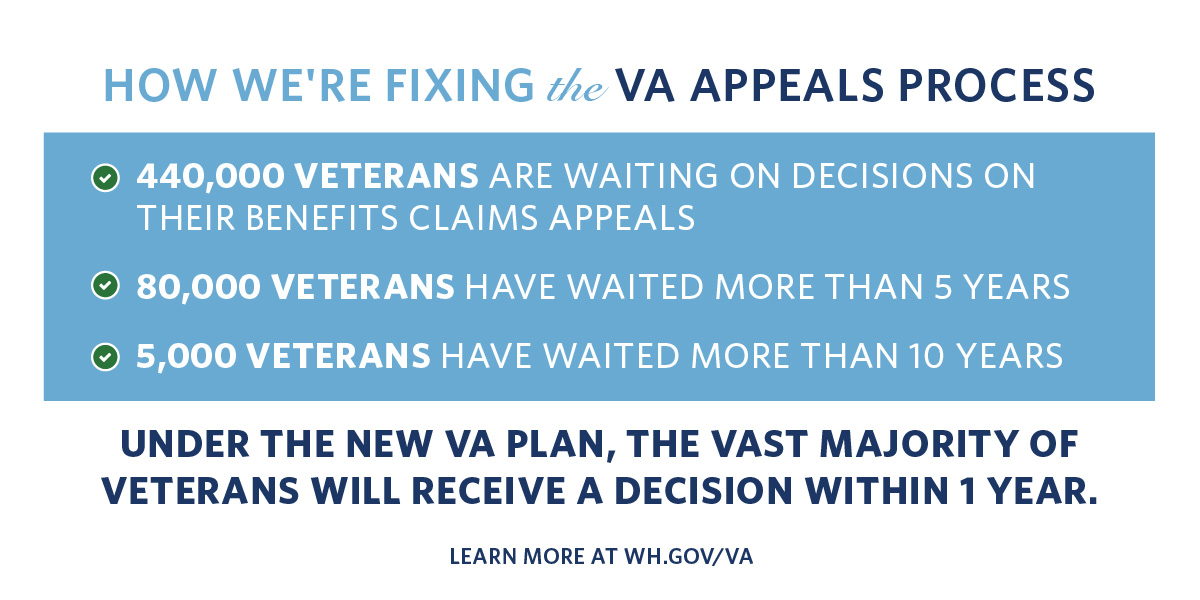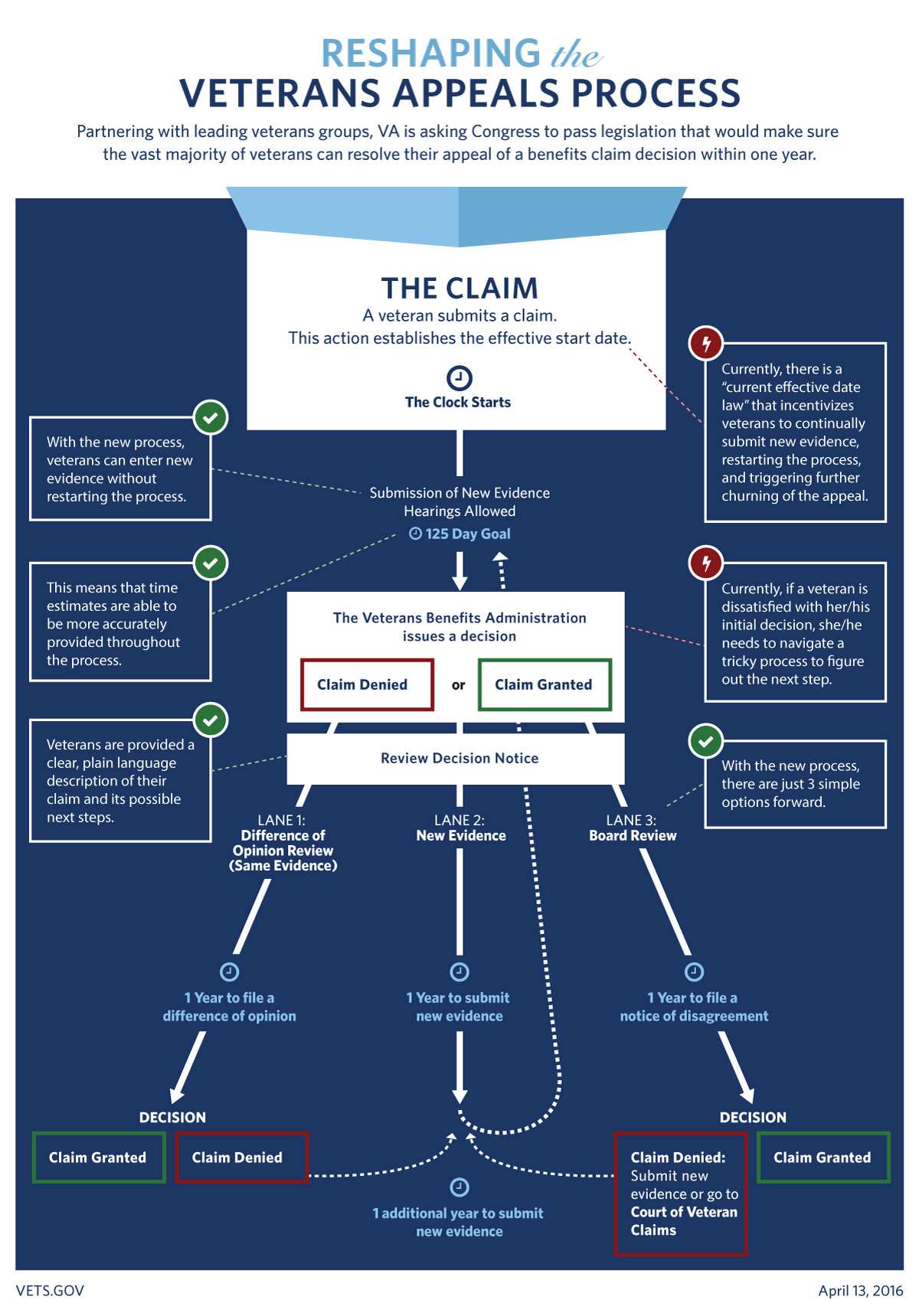
Veterans agree: The time has come to fix VA’s appeals process.

Since the Board of Veterans’ Appeals was founded in 1933, layer after layer of process has been added in a futile attempt to improve quality and timeliness by adding more and more procedure. The unfortunate result of these well-intentioned reforms has been to create a process that struggles to ever bring appeals to resolution. Instead, many appeals move from one part of VA to another rather than giving the veteran an answer.
In 2012, VA made the commitment to address the growing disability claims backlog. It took too long for too many veterans to receive a decision on their claim. That commitment has resulted in transformational change and a reduction in backlogged claims by almost 90 percent. For veterans, that means better and faster claims decisions.
But as VA has become more efficient in claims processing and it has processed more claims, the number of veterans who want a second look at their decision through the appeals process has risen proportionally. And as that has happened, it has illuminated the unworkability of a process that churns matters from one body to another rather than providing timely, predictable appeals answers for veterans.
In short, the VA appeals process is failing veterans, creating layers and layers of duplicative review that starts back at square one every time new information is added. As VA strives to become an agency focused on better serving veterans, it has become obvious that this is the time for change. This is VA’s next challenge.
Here's our plan to fix it.

In recent weeks, VA has brought together the nation’s leading veteran advocacy groups for their input. They are our steadfast partners in improving the way we deliver services to veterans.
As a result of weeks of listening, VA has put forward a new proposal that would provide veterans with a simple, fair, and transparent appeals process in which the vast majority would receive a final appeals decision within one year of filing an appeal by 2021. This disentanglement of process is enabled by one crucial innovation — giving veterans multiple paths to adjudicate disputes on a claim, while preserving the effective date that the initial claim was filed.
This simple change, along with a few others, will modernize the veteran appeals process, better serving veterans, taxpayers, and the nation for years to come. And since it was layer upon layer of law that got us tangled, VA will need Congress’ help to untangle it, and has been working to make this legislative change a reality, and soon.

